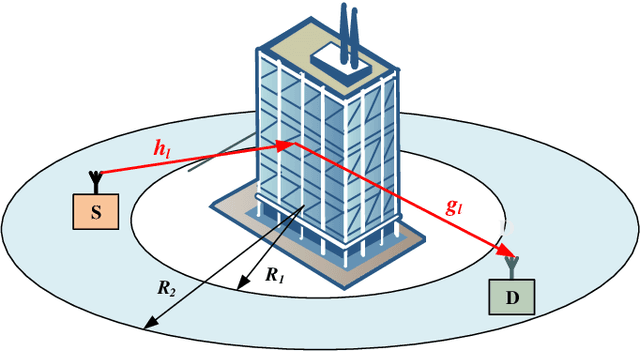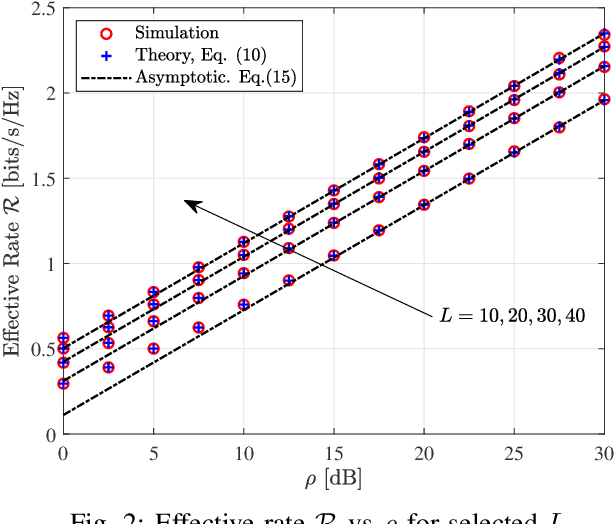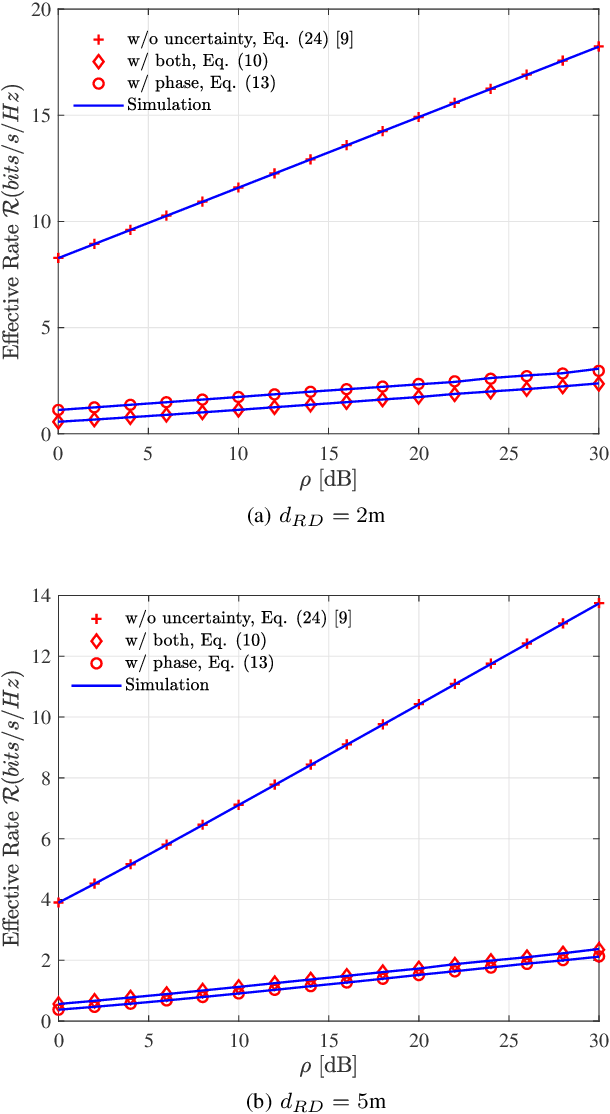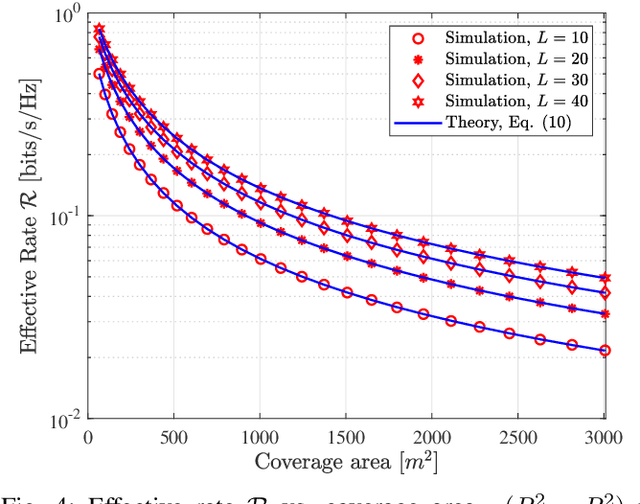Effective Rate of RIS-aided Networks with Location and Phase Estimation Uncertainty
Paper and Code
Dec 17, 2021



Reconfigurable Intelligent Surfaces (RIS) are planar structures connected to electronic circuitry, which can be employed to steer the electromagnetic signals in a controlled manner. Through this, the signal quality and the effective data rate can be substantially improved. While the benefits of RIS-assisted wireless communications have been investigated for various scenarios, some aspects of the network design, such as coverage, optimal placement of RIS, etc., often require complex optimization and numerical simulations, since the achievable effective rate is difficult to predict. This problem becomes even more difficult in the presence of phase estimation errors or location uncertainty, which can lead to substantial performance degradation if neglected. Considering randomly distributed receivers within a ring-shaped RIS-assisted wireless network, this paper mainly investigates the effective rate by taking into account the above-mentioned impairments. Furthermore, exact closed-form expressions for the effective rate are derived in terms of Meijer's $G$-function, which (i) reveals that the location and phase estimation uncertainty should be well considered in the deployment of RIS in wireless networks; and (ii) facilitates future network design and performance prediction.
 Add to Chrome
Add to Chrome Add to Firefox
Add to Firefox Add to Edge
Add to Edge